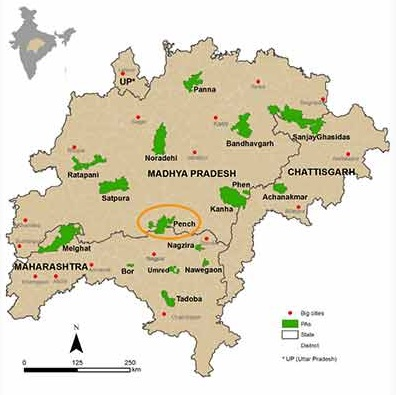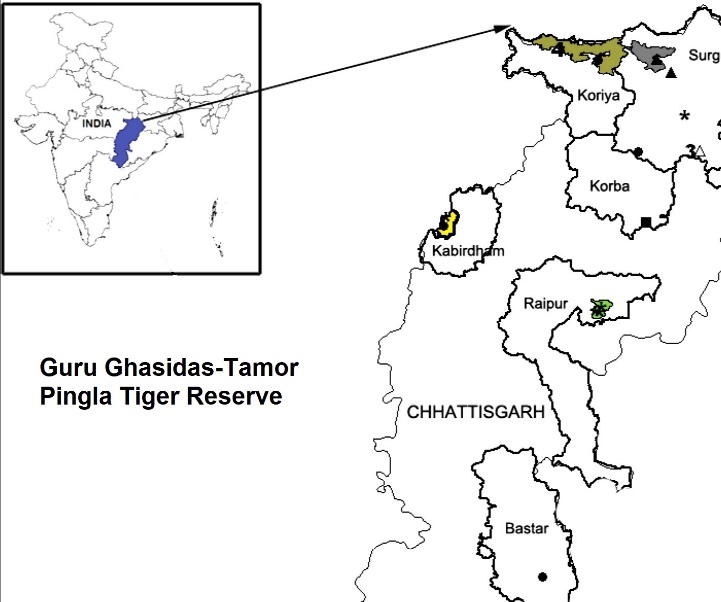- Courses
- GS Full Course 1 Year
- GS Full Course 2 Year
- GS Full Course 3 Year
- GS Full Course Till Selection
- Answer Alpha: Mains 2025 Mentorship
- MEP (Mains Enrichment Programme) Data, Facts
- Essay Target – 150+ Marks
- Online Program
- GS Recorded Course
- Polity
- Geography
- Economy
- Ancient, Medieval and Art & Culture AMAC
- Modern India, Post Independence & World History
- Environment
- Governance
- Science & Technology
- International Relations and Internal Security
- Disaster Management
- Ethics
- NCERT Current Affairs
- Indian Society and Social Issue
- NCERT- Science and Technology
- NCERT - Geography
- NCERT - Ancient History
- NCERT- World History
- NCERT Modern History
- CSAT
- 5 LAYERED ARJUNA Mentorship
- Public Administration Optional
- ABOUT US
- OUR TOPPERS
- TEST SERIES
- FREE STUDY MATERIAL
- VIDEOS
- CONTACT US
Ratapani: 8th Tiger Reserve Of Madhya Pradesh
Ratapani: 8th Tiger Reserve Of Madhya Pradesh
03-12-2024

- On December 2, 2024, the Ratapani Wildlife Sanctuary in Madhya Pradesh was officially declared a 8th tiger reserve of state (57th tiger reserve of India).
- This decision came after receiving in-principle approval from the Ministry of Environment, Forest, and Climate Change through the National Tiger Conservation Authority (NTCA).
Key Features of the Ratapani Tiger Reserve
- Location and Area:
- The Ratapani Tiger Reserve is located in the Raisen district of Madhya Pradesh, nestled in the Vindhya Hills.
- The reserve covers a total area of 1,271.4 square kilometers, which includes:
- Core area: 763.8 square kilometers.
- Buffer area: 507.6 square kilometers.
- Ecological Significance:
- The sanctuary is home to teak forests and a variety of wildlife, making it an important conservation area.
- The reserve also includes the Bhimbetka Rock Shelters, which are a UNESCO World Heritage Site, as well as several historical and religious sites.
- Its proximity to Bhopal (less than 50 km) makes it an accessible destination for wildlife enthusiasts and tourists.
Benefits of Declaring Ratapani a Tiger Reserve
- Economic Opportunities for Local Communities:
- Ecotourism is expected to grow significantly, bringing employment and improving the livelihoods of local communities.
- The creation of the tiger reserve is likely to increase local businesses, particularly in the areas of tourism and wildlife-related services.
- Conservation and Management:
- With the new tiger reserve status, Madhya Pradesh will receive funding from the NTCA, which will help with better management and conservation of wildlife in the area.
- The funds will be used for wildlife protection and maintaining the natural habitat of the tigers and other species in the reserve.
- Support for Local Inhabitants:
- The government will introduce eco-development programs to support the local population, ensuring that their living standards improve alongside conservation efforts.
- Local villages within the reserve will benefit from development projects aimed at improving infrastructure and providing alternative sources of income.
- Protection of Local Rights:
- The buffer zone designation means that nine revenue villages (covering 26.947 square kilometers) will be included in the reserve's buffer area.
- However, the rights of these local villagers will remain unaffected.
- The villagers will be allowed to continue with their usual activities, but there will be increased support for them through eco-friendly initiatives.
Legal and Administrative Aspects
- The notification declaring Ratapani a tiger reserve was issued under Section 38V of the Wildlife (Protection) Act, 1972, which recognizes the core area as a critical tiger habitat.
- The official declaration ensures the protection of the tiger population in the region and supports ongoing efforts to increase the tiger population in the state.
Madhya Pradesh’s Growing Network of Tiger Reserves
- Ratapani becomes the eighth tiger reserve in Madhya Pradesh, which already has a strong focus on tiger conservation.
- In addition, Madhav National Park is also expected to be declared a tiger reserve soon.
- The Government of India is expected to issue a notification for Madhav within 15 days, marking another step forward in tiger conservation in the state.
Conclusion
The establishment of the Ratapani Tiger Reserve is an important step for wildlife conservation in Madhya Pradesh and will bring economic and social benefits to the local communities. The reserve, with its rich biodiversity and historical importance, is set to become a key destination for ecotourism and will receive much-needed funding for conservation efforts. With ongoing support for local inhabitants and the protection of tiger habitats, this move promises a brighter future for both the people and wildlife of the region.
Guru Ghasidas-Tamor Pingla: 56th Tiger Reserve of India
|
Must Check: Best IAS Coaching In Delhi
UPSC Prelims Result 2024 Out: Expected Cut Off & Other Details, UPSC Prelims 2024 Answer with Explanation, Daily Prelims Quiz, Daily Current Affairs, MONTHLY CURRENT AFFAIRS TOTAL (CAT) MAGAZINE, Best IAS Coaching Institute in Karol Bagh, Best IAS Coaching Institute in Delhi, Daily Mains Question Answer Practice, ENSURE IAS UPSC Toppers, UPSC Toppers Marksheet, Previous Year Interview Questions, UPSC Syllabus





